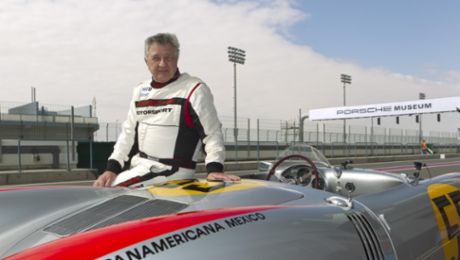For a time, Porsche offered the 911 as a six-cylinder boxer with varying power outputs, as well as the 912 with its four-cylinder boxer – an offering designed to appeal to 356 customers. In the 912, a 1.6-litre four-cylinder boxer developed 90 PS, while the 911 featured a 2.0-litre six-cylinder boxer, which was initially available with 110 PS, 130 PS, 140 PS or 160 PS. With the 911 T, E and S variants, Porsche became the first German manufacturer to fulfil the strict American emissions standards issued by the EPA. And with larger displacements of 2.2 litres (1969) and 2.4 litres (1971), the Porsche 911 got more powerful.
The 911 Carrera RS 2.7 of 1972 with 210 PS and a kerb weight of 960 kg in the Sport version was hailed as an absolute dream car from the get-go – and sold out straight away. Its characteristic ducktail is notable for being the first rear spoiler to be fitted as standard on a production vehicle.
From 1967, the 911 was available with the Sportomatic semi-automatic four-speed gearbox.

